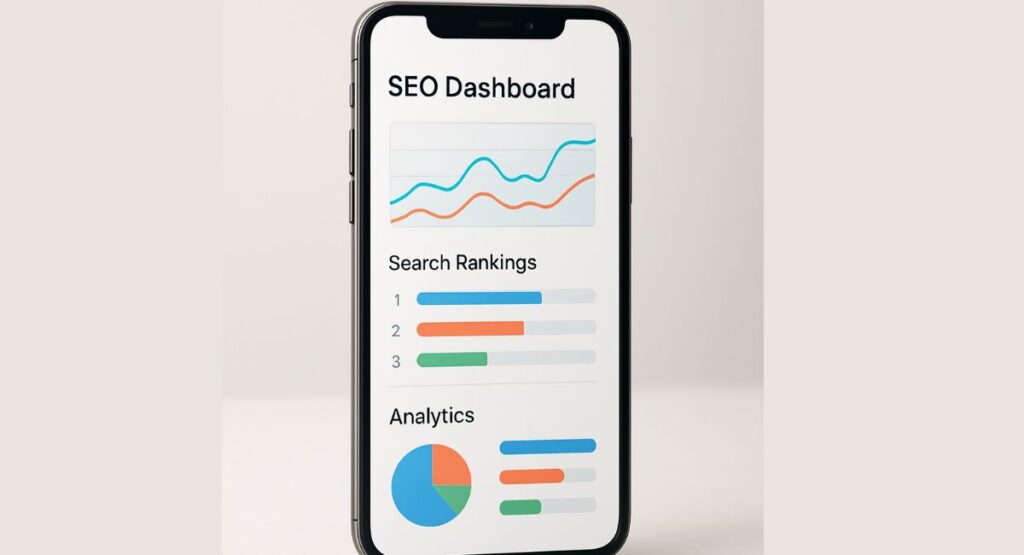Imagine browsing the web on your phone—perhaps looking for a recipe while waiting at the grocery store or comparing prices while standing in an aisle. These days, more people search via mobile devices than desktops. If your site isn’t optimized for mobile, you’re missing out on valuable visitors and conversions.
In this guide, we’ll explore Mobile SEO—what it is, why it matters, and how to make your site mobile-friendly using simple, clear steps. Let’s get started!
Why Is Mobile SEO Important
Mobile SEO is vital because Google uses mobile-first indexing. That means your mobile site—not the desktop version—is what Google evaluates for ranking. If your site isn’t mobile-friendly, it may drop in search rankings and lose traffic.
Mobile devices now account for more than half of all web traffic. People expect fast load times, easy navigation, and clear content, especially when they’re on the go.
Mobile SEO Tools and Testing Methods
To create a mobile-friendly site, you need the right Mobile SEO tools. Here are a few essentials:
- Google PageSpeed Insights: Tests page speed and performance.
- Lighthouse (via Chrome DevTools): Provides mobile audits, including performance, accessibility, and best practices checks.
- Google’s Mobile-Friendly Test: Quickly checks if a page works well on mobile.
- SEMrush Site Audit: Switch to a mobile user-agent to identify crawl issues that affect mobile indexing.
These tools help you track Core Web Vitals (LCP, INP, CLS) and ensure your site meets mobile usability standards.
Mobile SEO Tutorial: Step-by-Step Optimization
Ready to optimize your site? Follow this Mobile SEO tutorial:
- Implement Responsive Design
- Adopt responsive web design so your layout adjusts to all screen sizes. This is the best practice for SEO and usability.
- Improve Page Speed
- Compress images in WebP or AVIF format
- Minify HTML, CSS, and JavaScript
- Use lazy loading
- Employ caching and a CDN
- Test regularly with PageSpeed Insights or Lighthouse.
- Write Mobile-Friendly Content
- Use short paragraphs
- Use headings and bullet lists for skimmable reading
- Ensure font sizes are at least 16px
- These elements enhance readability on smaller screens
- Design Touch-Friendly Buttons
- Buttons and links should be at least 48×48 pixels to prevent mis-taps. Give them room and ensure they’re clearly visible.
- Simplify Website Navigation
- Use a clear hamburger menu, a visible search bar, and sticky navigation to keep key links accessible.
- Optimize for Local Searches
- Claim and optimize your Google Business Profile and maintain consistent NAP information. Add Local Business schema markup to enhance visibility in local search results.
- Use Structured Data
- Implement JSON-LD schema for articles, FAQs, products, and reviews. This helps generate rich snippets such as star ratings, FAQs, and product information in mobile search results.
- Avoid Intrusive Pop-Ups
- Delay pop-ups and keep them small. Always include a clear close button to avoid frustrating users.
- Prepare for Voice Search
- Use conversational FAQs and short, answer-first content. This helps voice assistants present your pages as answers, usually about 29 words long.
- Audit and Monitor Regularly
- Use Google Search Console’s Mobile Usability report, Lighthouse, and PageSpeed Insights to keep tabs on mobile performance and make needed improvements.
Mobile SEO Examples: Learn from Real Sites
Look at how top mobile-optimized sites succeed:
- Shopify’s mobile design: A clean layout, fast loading, and clear CTAs like “Add to Cart.”
- Yelp: Well-scaled menus, images filtered for mobile, and smooth search/navigation.
- BBC News: Intuitive mobile navigation and short paragraphs for easy reading.
These Mobile SEO examples show what works: speed, simplicity, and smooth interaction.
Local SEO Impact in Mobile Context
Local mobile search is booming. Many users search for nearby businesses using phrases like “near me.” To tap into Local SEO, enhance your local visibility with these actions:
- Keep Name, Address, and Phone (NAP) consistent
- Include localized keywords in titles and metadata
- Optimize images and structured data for local content and events
- Encourage authentic, positive reviews
A strong local presence enhances your visibility in both paid and organic mobile search results.
SEO Mobile-Friendly: Tips for a Polished Mobile Site
Creating an SEO mobile-friendly site involves:
- Quick loading speeds
- Easy access to important pages
- Easily readable content
- Clean and consistent design across devices
Regularly use tools like Google’s Mobile-Friendliness Test and Lighthouse to ensure your site stays optimized.
Mobile Friendly Test: How to Use It
Here’s how to use the Mobile Friendly Test:
- Visit Google’s Mobile-Friendly Test tool
- Enter your page URL
- Review the live preview and test results
- Fix any identified issues (viewport settings, font size, spacing, etc.)
This simple test is a great first step to ensure your site meets mobile standards.
Mobile-First Indexing Explained
Google’s Mobile-First Indexing means they predominantly use your mobile version of the content for indexing and ranking. If your site isn’t mobile-ready, you risk ranking lower or being left behind. It’s essential to ensure your mobile site is as optimized and content-rich as your desktop version.
Mobile SEO Services: When to Get Help
Need expert assistance? Consider Mobile SEO services from professionals who can help with:
- Responsive site development
- Mobile performance audits and optimization
- Structured data implementation
- Voice search content
- Local SEO and schema markup setup
- Ongoing maintenance and performance tracking
Professional support can be a game-changer, especially when time or technical know-how is limited.
Summary Checklist
| Step | Action |
| 1 | Use responsive design |
| 2 | Speed up your site (LCP < 2.5s) |
| 3 | Write mobile-friendly content |
| 4 | Ensure tap-friendly buttons |
| 5 | Simplify mobile navigation |
| 6 | Enhance local SEO |
| 7 | Add structured data |
| 8 | Limit intrusive pop-ups |
| 9 | Optimize for voice search |
| 10 | Audit regularly using mobile SEO tools |
conclusion
If you want your site to stand out in 2025 and beyond, Mobile SEO is essential. By focusing on performance, readability, simplicity, and user experience, you’ll build a site that both users and search engines appreciate.
Start with small, meaningful improvements. Optimize your content, boost your page speed, and tidy up your navigation. Together, we can build a mobile experience that really works.
FAQs
Q: Can we do SEO on mobile?
Yes, you can do SEO on mobile using mobile apps, responsive site design, and optimization tools like Google Search Console or SEMrush on mobile browsers.
Q: What are the 4 types of SEO?
The four types of SEO are On-page SEO, Off-page SEO, Technical SEO, and Local SEO, each focusing on different ranking factors.
Q: Is mobile SEO different from desktop SEO?
Yes, mobile SEO prioritizes mobile usability, loading speed, and responsive design, while desktop SEO may focus more on layout and larger-screen experiences.
Q: Is SEO worth it anymore?
Absolutely — SEO is still one of the most cost-effective ways to drive long-term organic traffic and build authority online.

I’m SEO expert and content writer at SEO Guest Pro.
I help websites rank higher, get more traffic, and grow fast using smart SEO and engaging content.
Let’s grow together!


Pingback: Local SEO Strategy 2025: Rank in Google & Attract Customers